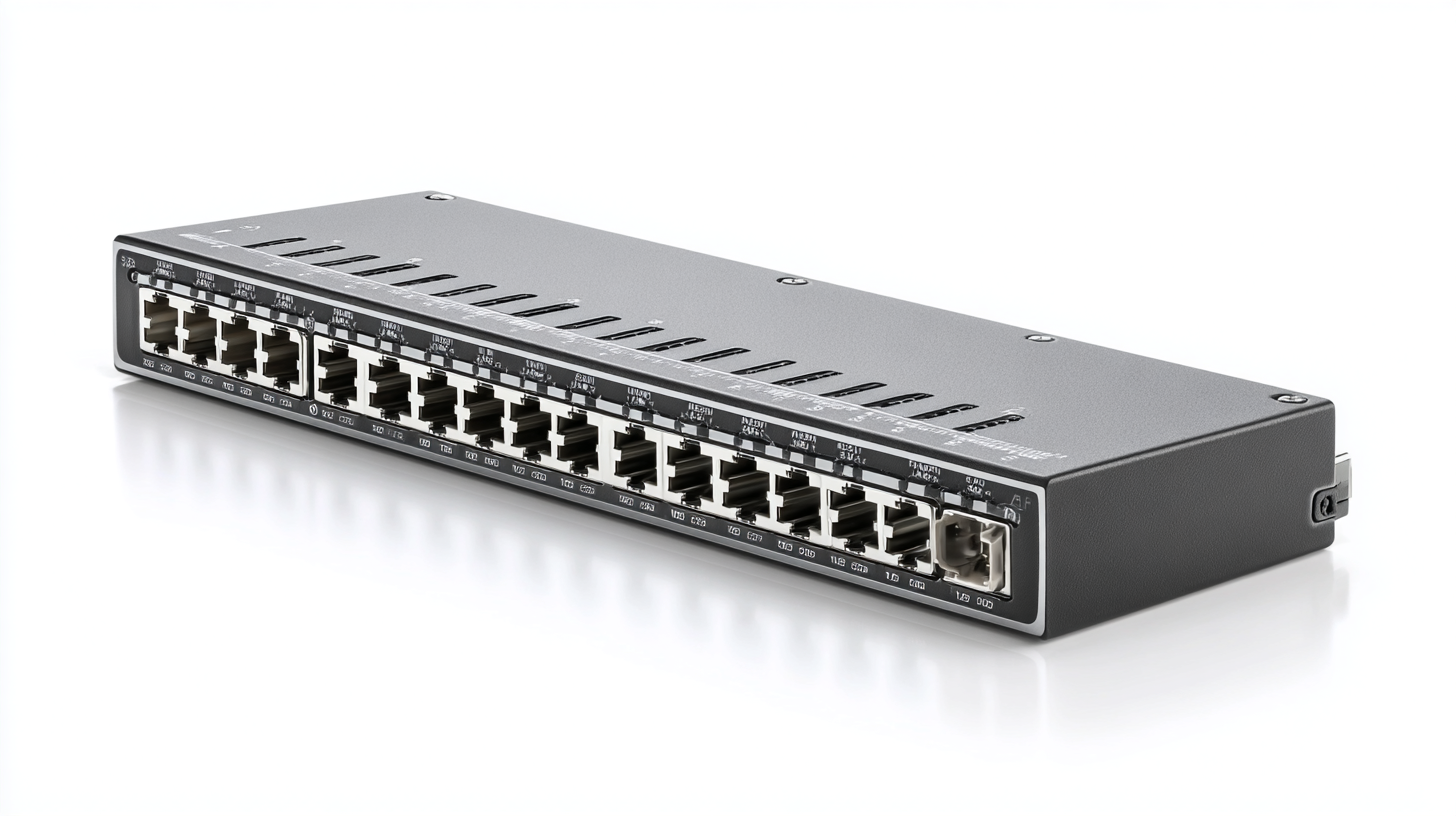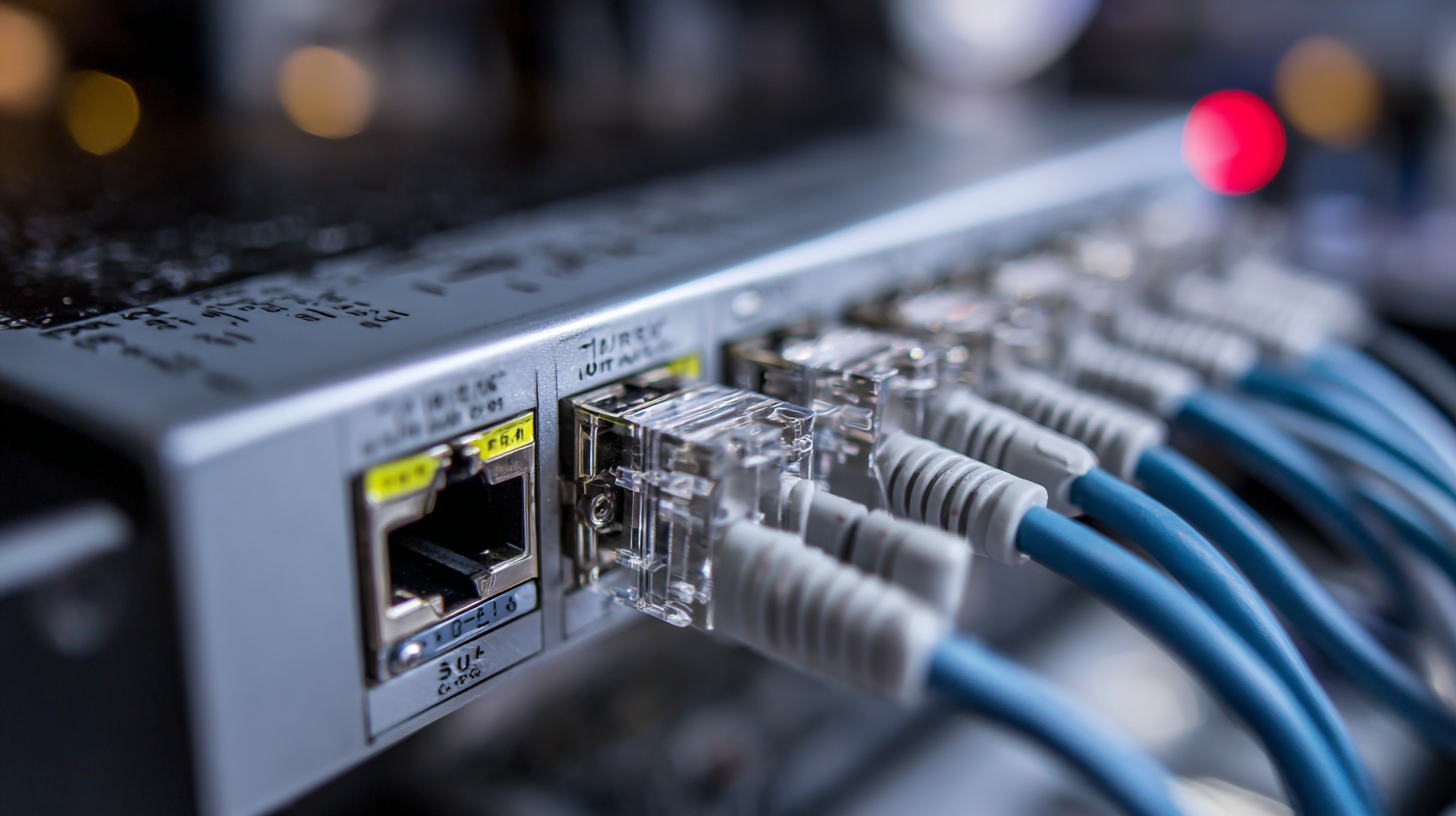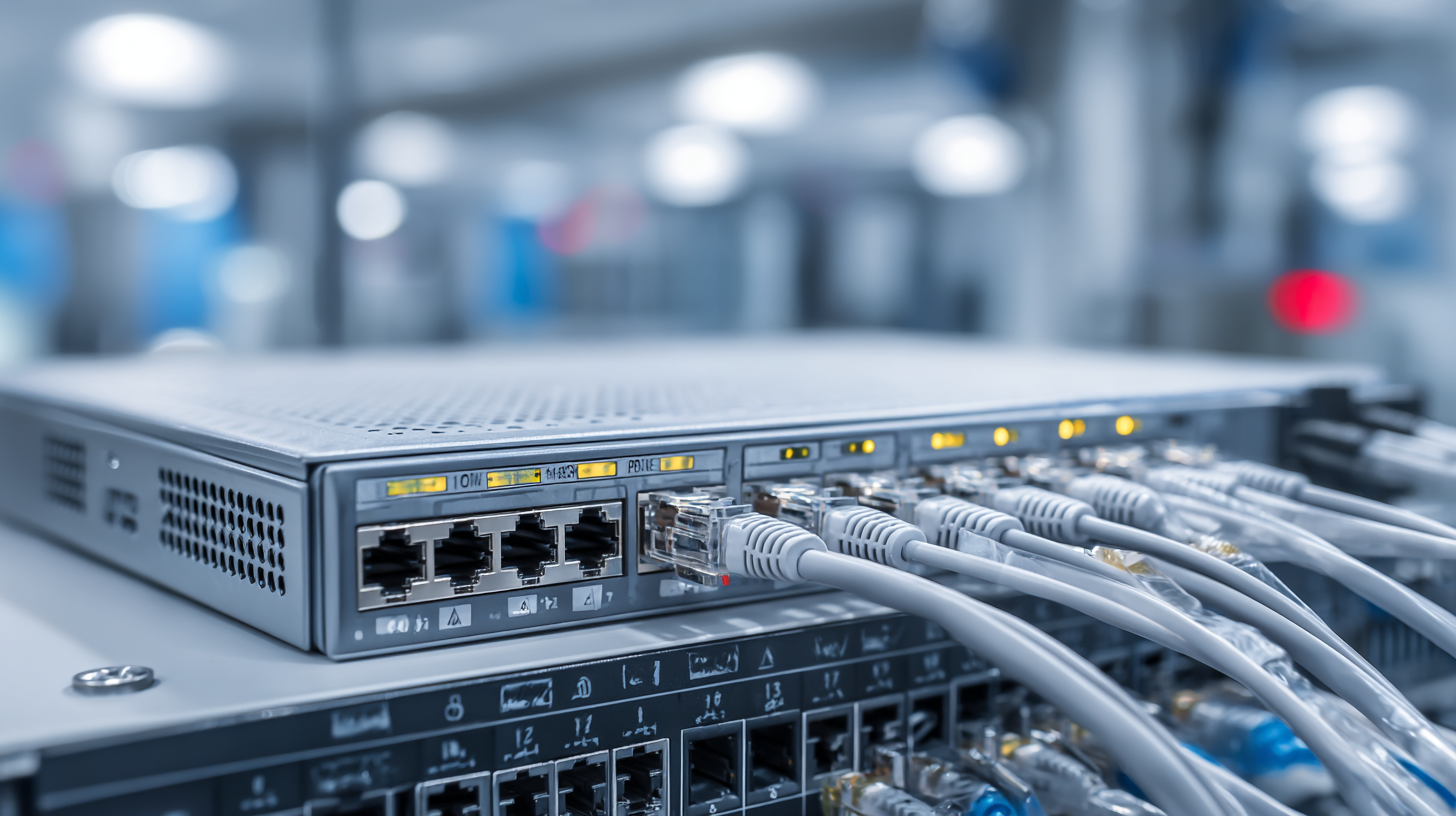
- [email protected]
- Mon - Sat at 7:00AM to 9:00PM
Leave Your Message

 In a world where data traffic continues to surge, the importance of choosing the right network equipment cannot be overstated. According to recent reports from industry analysts, global IP traffic will reach an estimated 4.6 zettabytes per year by 2022, and this trend shows no signs of slowing down. As such, a reliable Gigabit Switch has become an essential component for both enterprise-level organizations and home users alike. These switches not only facilitate faster data transfer rates of up to 1 Gbps per port but also help in managing and prioritizing network traffic efficiently.
With countless options available in the market, selecting the perfect Gigabit Switch tailored to your specific needs can be a daunting task. In this blog, we will explore five essential tips to guide you in making the best choice for your network infrastructure, ensuring optimal performance and reliability.
In a world where data traffic continues to surge, the importance of choosing the right network equipment cannot be overstated. According to recent reports from industry analysts, global IP traffic will reach an estimated 4.6 zettabytes per year by 2022, and this trend shows no signs of slowing down. As such, a reliable Gigabit Switch has become an essential component for both enterprise-level organizations and home users alike. These switches not only facilitate faster data transfer rates of up to 1 Gbps per port but also help in managing and prioritizing network traffic efficiently.
With countless options available in the market, selecting the perfect Gigabit Switch tailored to your specific needs can be a daunting task. In this blog, we will explore five essential tips to guide you in making the best choice for your network infrastructure, ensuring optimal performance and reliability.
When selecting a gigabit switch for your network, understanding your specific network needs is crucial. Take a moment to assess the size and structure of your network. Are you running a small office with only a few devices, or is it a larger setup with multiple connections? Knowing the number of devices and their bandwidth requirements can inform your choice and help you avoid bottlenecks that could impede performance.
Additionally, consider the types of connections you’ll need. For example, if your network requires Power over Ethernet (PoE) capabilities for devices such as IP cameras or VoIP phones, ensure the switch can support that technology. Furthermore, think about future-proofing your network; it may be wise to select a switch that allows for easy expansion or additional ports to accommodate growth or new technologies down the line. By thoroughly analyzing these aspects of your network, you're more likely to choose a gigabit switch that meets your current needs while being adaptable for the future.
| Tip | Description | Considerations |
|---|---|---|
| Assess Network Traffic | Understand the amount of data being transmitted across your network. | Evaluate current and future needs to prevent bottlenecks. |
| Look for Layer 2 vs. Layer 3 | Determine if you need basic switching (Layer 2) or routing capabilities (Layer 3). | Layer 3 switches are generally more expensive. |
| Port Count | Select a switch with sufficient ports for your devices. | Consider future expansions when choosing the number of ports. |
| Power over Ethernet (PoE) | Check if you need PoE to power devices like cameras or access points. | Ensure the switch provides enough power for all connected devices. |
| Budget Considerations | Determine your budget while keeping features in mind. | Higher price can mean better performance and features. |
When choosing the right gigabit switch for your network, understanding key specifications is crucial. Look for switches with at least 10 Gbps of bandwidth per port to ensure optimal performance for data-intensive tasks. According to a report by the International Data Corporation (IDC), networks operating with higher bandwidth switches can support up to 80% more devices without noticeable latency. This highlights the importance of selecting a switch that can accommodate your network growth without compromising speed.
Another essential specification is Power over Ethernet (PoE) capability. As businesses increasingly rely on devices like IP cameras and VoIP phones, PoE switches have become a necessity. A study by MarketsandMarkets indicates that the global PoE switch market is expected to grow at a CAGR of 17% over the next few years, underscoring the demand for these features. Investing in a switch with adequate PoE support can help streamline power management and reduce cable clutter in your setup.
In addition to bandwidth and PoE, consider the number of ports and the switch's management capabilities. Managed switches provide advanced features such as VLAN support and network monitoring, enhancing security and performance. A statistical analysis from Gartner suggests that organizations utilizing managed switches can decrease network configuration errors by up to 30%, making them a worthwhile investment for those looking to optimize their IT infrastructure.
When selecting a gigabit switch for your network, one of the most critical factors to consider is the number of ports you require. Understanding your current and future networking needs is essential, as it helps avoid both underutilization and overinvestment in equipment. For smaller home networks or offices, an 8 to 16-port switch may suffice, allowing connections for devices like computers, printers, and gaming consoles. However, if you anticipate growth or have a larger setup, opting for a switch with 24 or even 48 ports can provide the scalability to accommodate more devices without the need for additional switches.

Additionally, consider the types of devices that will connect to the switch. If you have multiple devices that need high bandwidth for activities such as video streaming, online gaming, or large file transfers, investing in a switch with more ports ensures that you won’t face bottlenecks. It is also worth noting that choosing a managed switch over an unmanaged one can give you the ability to prioritize traffic and enhance performance, making it a worthwhile investment for a network that is likely to expand in the future.
When selecting a Gigabit switch for your network, choosing between managed and unmanaged options is critical. Managed switches provide advanced features that are crucial for businesses requiring more control over their network performance. According to a report by IDC, over 50% of enterprises now utilize managed switches to optimize their bandwidth and improve security protocols. With capabilities such as VLAN support, port mirroring, and traffic prioritization, managed switches can easily handle complex network configurations and help streamline data flow.
On the other hand, unmanaged switches are often favored for simpler setups where ease of use and cost-effectiveness are priorities. Ideal for home networks or small offices, these plug-and-play devices require minimal setup and are typically more affordable. A study conducted by Gartner highlights that unmanaged switches can be sufficient for 70% of small businesses that do not require extensive network management tools. However, as your network grows or your requirements change, the limitations of unmanaged switches may become apparent, prompting a potential upgrade to a managed solution for better scalability and control.
This chart illustrates the key differences in features between Managed and Unmanaged Gigabit Switches, helping you to choose the right option for your network setup.
When searching for the right gigabit switch for your network, evaluating budget options is crucial to finding the best balance between performance and cost. With a variety of switches available on the market, it’s easy to be overwhelmed by choices. It’s essential to determine your needs and prioritize features that align with your budget. For instance, consider how many ports you require and whether you need managed versus unmanaged switches, as these differences can significantly impact pricing.
Additionally, researching brands and reading user reviews can provide insights into the reliability and longevity of a switch. Sometimes, opting for a slightly higher upfront investment can save you money in the long run through extended warranties or better performance, minimizing the need for future replacements or upgrades. Remember that cost-effective solutions often come from vendors that provide solid support and reliability, reflecting a true value beyond just the initial purchase price.
